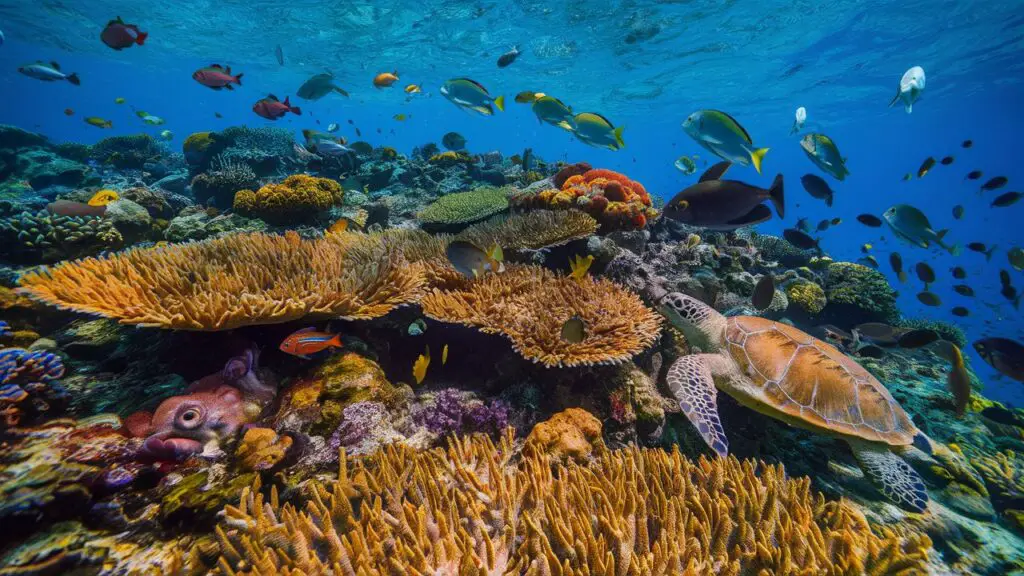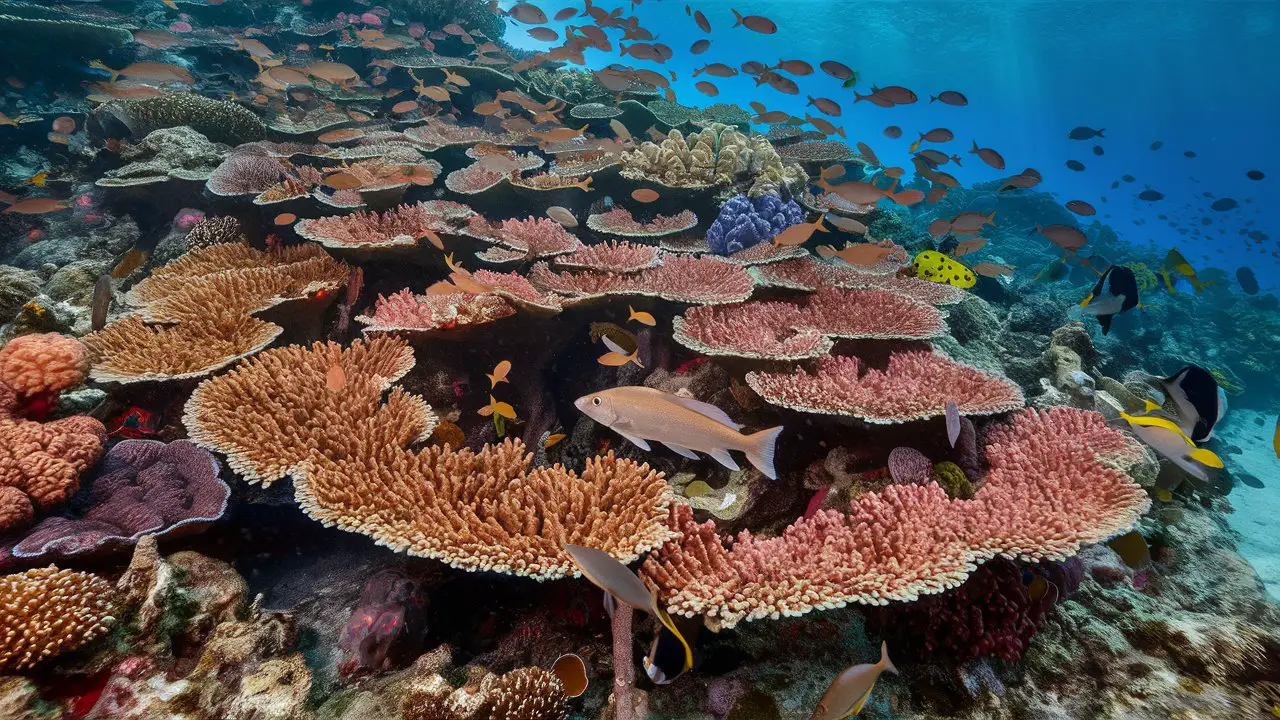As you walk the sandy beaches and gaze upon the turquoise waters, you feel a deep connection to the living ocean. Yet one cannot ignore the growing threats facing our seas. Overfishing has decimated fish populations, pollution chokes coastal waters, and climate change bleaches vibrant coral reefs. The fate of countless species hangs in the balance. While the challenges seem daunting, you know that all hope is not lost. With swift, decisive action guided by scientific understanding,
there is still time to reverse the damage done. The choice is yours – will you be a passive observer as marine ecosystems decline or an active steward fighting for their revival? The next decade will determine the legacy we leave future generations. You have the power to restore the splendor of our oceans teeming with diverse life. The question is, how will you use it?
The Importance of Coral Reefs for Marine Life
Coral reefs are vital habitats for marine life and play an integral role in supporting biodiversity in the ocean.### Food Source and Shelter
Coral reefs provide food and shelter for many species of fish and other sea creatures. The intricate structure of coral reefs offers hiding spots, nursery grounds, and hunting areas for reef animals. Many reef fish feed directly on corals, while others eat the algae and small invertebrates that live on the corals.
Maintaining Populations
Healthy coral reefs maintain stable populations of reef animals by providing suitable living conditions and breeding habitats. For example, coral reefs are important spawning and nursery grounds for many species of commercial fish and crustaceans. Without coral reefs, the populations of these marine animals would decline significantly.
Protecting the Shoreline
Coral reefs also protect coastlines by absorbing wave energy and preventing erosion of the shore. The hard, jagged coral structures break up wave action, thereby sheltering coastal lands and communities. In areas where coral reefs have been degraded, shorelines have become more vulnerable to damage from storms and flooding.
Restoring Coral Reefs
To restore coral reefs and the marine life that depends on them, conservation efforts are needed to curb pollution, overfishing, coastal development, and the impacts of climate change. Protecting existing healthy reefs and rehabilitating damaged reefs can help revive populations of reef animals. Artificial reef structures may also provide additional habitats to supplement natural coral reefs. With substantial global action, there is hope that coral reefs and marine biodiversity can recover and thrive again by 2030 and beyond.
Threats Facing Coral Reefs Today
Today, coral reefs around the globe face grave threats that endanger their survival and the abundance of life they support. ###Pollution from human activities poses a serious problem for coral reef health. Runoff from coastal development and agriculture, as well as oil spills and sedimentation, introduce excess nutrients and chemicals into reef environments. When pollution is excessive, it can lead to algal blooms that smother corals and deplete oxygen levels. Plastic pollution also entangles and kills coral reef animals.
Climate change is exacerbating the stress on coral reefs. Rising ocean temperatures lead to coral bleaching, in which corals expel the algae that live inside them and provide them with nutrients. Prolonged or severe bleaching events can cause widespread coral death. Ocean acidification, caused by increased carbon dioxide in the atmosphere, makes it difficult for corals and other marine organisms to build their shells and skeletons. Sea level rise threatens to inundate coral reefs and the coastal communities that depend on them.
Destructive fishing practices and overfishing undermine coral reef health. Bottom trawling, in which large nets are dragged across the seafloor, crushes corals and destroys reef habitat. The use of cyanide and dynamite to stun and kill fish also obliterates reefs. Overfishing key species disrupts the delicate balance of the reef ecosystem. When parrotfish and other herbivores are overfished, algae can overtake the reef.
To safeguard coral reefs and the benefits they provide, bold actions must be taken immediately to mitigate these threats. Protecting and restoring coral reefs will require global cooperation and political will, but the rewards of success would be invaluable. By taking action in the next decade, there is still hope of restoring coral reef abundance and diversity to levels not seen since before the Industrial Revolution. The fate of coral reefs hangs in the balance, and the time for change is now.
Innovative Solutions to Restore Coral Reefs
Artificial Reefs
To combat the loss of coral reefs, scientists have developed innovative artificial reefs that provide a surface for new coral growth. Artificial reefs are man-made structures submerged in water to promote marine life in areas where natural coral reefs have been depleted. They are designed to mimic the complex structure of natural reefs and are made from environmentally-friendly materials like concrete, steel, and rock. When placed in tropical waters, artificial reefs attract coral larvae and other invertebrates to settle and grow on their surface. Over time, these artificial reefs develop into new vibrant coral ecosystems.
Coral Farming
Coral farming, also known as coral gardening, is another promising solution for restoring damaged reefs. Coral farming involves collecting and growing fragments of healthy coral in nurseries before replanting them in depleted reef areas. Coral fragments are grown by attaching them to structures where they can be monitored and cared for until large enough to replant. This helps scale up coral production to restore reefs at a much faster rate. Coral farming has been successful in countries like Australia, Indonesia, and the Philippines.
Regulating Pollution and Protecting Habitats
Restoring coral reefs also requires tackling pollution, coastal development, and other human activities that threaten reef health. Regulating agricultural runoff, limiting pollution from mining and industry, and protecting key habitats are important steps towards creating an environment where coral reefs can thrive again. Establishing marine protected areas that restrict human activity can help reefs recover by reducing direct damage and allowing natural regeneration processes to occur. Protecting watersheds on land and controlling sedimentation will also improve water quality for coral growth. By curbing pollution and protecting habitats, we give coral reefs their best chance at restoration.
Restoring the world’s coral reefs will require global cooperation and the widespread adoption of innovative solutions. With continued research and conservation efforts focused on artificial reefs, coral farming, and habitat protection, there is hope that coral reefs can rebound and once again support the rich abundance of marine life that depends on them. Significant progress has already been made, but much work still remains to achieve full restoration of these invaluable ecosystems by 2030.

How You Can Help Save Coral Reefs
As an individual, there are several actions you can take to help protect and restore coral reefs. Reducing pollution and practicing sustainable habits can have a significant impact over time.
Reduce Plastic Use
Plastic pollution poses a major threat to marine life and coral reefs. You can help by using reusable bags when shopping, choosing products with less packaging, and properly disposing of any plastic waste. Reduce single-use plastics like straws, cups, and cutlery. When plastic enters the ocean, it harms sea life that mistake it for food or get entangled in it.
Conserve Water
Fresh water runoff into oceans can damage coral reefs by reducing salinity and introducing pollutants. You can conserve water by taking shorter showers, turning off the faucet when not in use, and using water efficient appliances. Avoid overuse of fertilizers and pesticides in your yard which can enter waterways.
Eat Sustainable Seafood
Some fishing practices like trawling destroy coral reef habitats. Choose seafood from sustainable sources to support the health of marine ecosystems. Consult seafood guides to determine which options are most eco-friendly and avoid overfished species.
Travel Responsibly
If traveling to destinations with coral reefs, choose tourism operators that follow sustainable practices and properly educate guests. Do not touch, stand on, or collect coral when snorkeling or diving. Practice reef-safe sun protection by using mineral-based sunscreens without oxybenzone or octinoxate, which can harm corals.
Support Conservation Organizations
Donate or volunteer your time with organizations that protect marine environments and restore coral reefs. Many work to establish marine protected areas, curb pollution and overfishing, research coral resilience, and regrow damaged reefs using techniques like micro-fragmentation and 3D coral farming. Collective action can make a difference.
By making small changes to your daily habits and actions, you can positively impact coral reefs and marine life. Every step towards sustainability and reducing pollution helps secure the future of these vital ecosystems. Together, we have the power to save coral reefs by 2030 and beyond.
Restoring Marine Life and Coral Reefs by 2030: FAQs
What efforts are underway to restore marine life by 2030?
Restoring marine life and coral reefs is a global priority to combat climate change and protect vulnerable ecosystems. Several initiatives aim to restore marine habitats and strengthen protections for at-risk species. The United Nations has set a goal to conserve at least 30% of the ocean by 2030. Nonprofits are working to curb pollution, transition fisheries to sustainable practices, and establish more marine protected areas. New technologies like coral farming and 3D printing are being used to regrow damaged reefs.
How can individuals support marine conservation?
Every person can take actions to support ocean restoration. Reducing single-use plastics, eating sustainable seafood, and properly disposing of waste helps cut down on pollution. Volunteering for beach cleanups and habitat restoration events makes a direct impact. Donating to organizations that protect marine life and advocate for policy changes enables their important work. Traveling sustainably and offsetting the environmental impact of trips can also benefit the oceans.
What types of jobs are involved in marine conservation and restoration?
The field of marine conservation involves many rewarding career paths. Marine biologists study ocean life and ecosystems. Environmental scientists help assess the impact of human activity on the seas and develop solutions to threats like climate change and pollution. Policy analysts work to craft and implement laws and regulations that safeguard marine habitats and species. Educators teach communities about the importance of the oceans and how they can help. Fundraisers secure financial support for nonprofits and research organizations. There are also many opportunities for volunteers and interns interested in gaining experience in marine conservation.
What are the greatest challenges facing efforts to restore ocean life?
While awareness of marine issues is growing, restoring ocean life by 2030 will require overcoming significant obstacles. Climate change poses an enormous threat, as rising temperatures and sea levels degrade habitats, increase storms, and disrupt ecosystems. Plastic pollution has reached crisis levels, infiltrating the entire ocean food web. Overfishing threatens populations of tuna, cod, and other commercially valuable species. Mining and coastal development degrade and destroy coastal ecosystems like mangroves, seagrasses, and coral reefs. Lack of political will and limited funding also hamper large-scale conservation efforts. Tackling these challenges will require cooperation at all levels of society.
Conclusion
You have the power to restore and protect our oceans. Although the challenges are complex, solutions exist if people unite behind a shared vision. Contact your representatives, reduce plastic waste, support conservation efforts, and spread awareness. We all depend on healthy oceans teeming with life. The choice is yours – take action now so future generations can enjoy the beauty and abundance of our blue planet. With knowledge, willpower, and perseverance, we can revive fragile ecosystems. The time for change is now. Our oceans are calling.
Don’t Miss a Thing! Enhance Your Wildlife Photography with Ultra-X Night Vision Goggles.
GET NOW!






